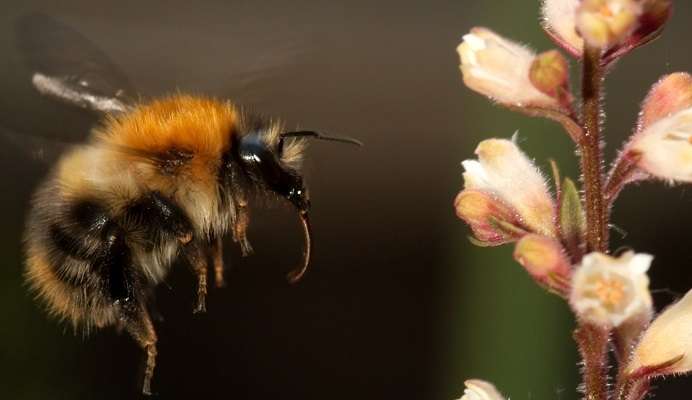
Plants Might Be Listening: Groundbreaking Research Reveals Extraordinary Acoustic Communication Between Flowers and Pollinators
A fresh wave of research is challenging established beliefs regarding the sensory capabilities of plants. While it has long been recognized that plants utilize color, fragrance, and even chemical cues to engage with their surroundings, a pioneering study suggests that plants might also possess the ability to “hear”—and react—to sound. In particular, flowers are capable of detecting the buzzing of nearby pollinators and enhancing their nectar in response, effectively eavesdropping on insects to boost their chances of reproduction.
This innovative discovery not only expands the horizons of plant biology but also introduces a new sphere of bioacoustic communication, indicating that some of nature’s most subtle organisms may participate in an intricate evolutionary dialogue.
Responding to the Call of the Pollinator
The research, showcased at the joint gathering of the Acoustical Society of America and the International Congress on Acoustics, centered on snapdragon flowers (Antirrhinum majus), a plant extensively studied in the context of pollination ecology. Researchers observed that these flowers reacted to recordings of buzzing bees by significantly elevating nectar sugar levels and even altering gene expression associated with nectar production and sugar transport.
“We have often acknowledged visuals and scents as the primary means of communication between plants and pollinators,” explained Francesca Barbero, lead researcher from the University of Turin. “It appears there is also an acoustic dimension—plants can detect the specific frequency patterns of buzzing bees and respond almost instantaneously.”
Through controlled laboratory experiments, Barbero’s team subjected blooming snapdragons to the low-frequency buzz of Rhodanthidium sticticum, commonly known as the snail-shell bee. Within a mere three minutes of being “buzzed,” the plants raised the sugar concentration in their nectar, making it a more enticing offering for pollinators.
This swift reaction indicates that flowers are not merely passive entities waiting for pollination but active players in a bilateral interaction. By enhancing rewards when favored pollinators are near, plants might be employing evolutionary tactics to facilitate successful pollination.
Not All Buzz Is Equal
Interestingly, the flowers’ responses to sound were not uniform across the board. The flowers did not react similarly to higher-frequency sounds or the buzzes of less effective pollinators and nectar thieves—species that consume nectar without contributing to pollination. This selectivity suggests that flowers can differentiate between various acoustic signatures, demonstrating an exceptionally refined sensory system.
“We believe this signifies an adaptive strategy,” Barbero stated. “By focusing their responses on effective pollinators, plants could bolster reproduction and conserve resources on unproductive visitors.”
An Ongoing Dialogue?
The latest findings naturally prompt the question: If flowers can hear pollinators, can they also generate sounds to attract them? This is the next vital question the team is exploring.
Bee buzzing, for instance, may resonate with the petals or entire flower in a manner that activates the plant’s biological processes. If plants were to emit sound—or vibrations—in a discernible pattern recognizable to bees, it could indicate a co-evolved, mutualistic acoustic communication.
“The concept of a two-way acoustic relationship is truly captivating,” remarked Barbero. “If validated, it may become possible to apply these discoveries in agricultural contexts to draw specific pollinators to crops solely through sound.”
Acoustic Intelligence: Beyond Buzz
This isn’t the first occasion researchers have discovered that plants are responsive to sound. Prior studies have shown that specific pitches can influence:
– Seed germination rates
– The direction and form of plant growth (a process known as thigmomorphogenesis)
– Photosynthetic efficiency and nutrient uptake
– Activation of genes related to stress responses and defense
– Hormone levels that affect growth and resistance
Plants have also demonstrated electrical activity and signal transmission in reaction to vibrations caused by herbivores feeding on leaves—a revelation that has raised questions about their functions in defense mechanisms.
The snapdragon experiments advance this research, providing the most concrete instance yet of a plant altering its behavior in real-time in response to environmental sounds.
Collaborative Endeavors Unlocking Nature’s Mysteries
This breakthrough is the product of collaboration among international specialists in plant biology, entomology, and acoustic engineering. The team comprises members from the University of Turin (Italy), the Institute for Integrative Systems Biology (I²SysBio) in Valencia (Spain), and the University of Technology Sydney (Australia).
Their joint project, titled “Good Vibes: How Do Plants Recognize and Respond to Pollinator Vibroacoustic Signals?”, seeks to decipher this newly revealed sensory domain within plants.
“This work represents how fields such as sound engineering and biology can converge to transform our comprehension of life,” said J. Tomás Matus from I²SysBio. “By pinpointing the genes activated when flowers ‘hear,’ we’re revealing mechanisms once believed to be outside the realm of plant capabilities.”
Implications for Agriculture and Future Applications
As climate change and habitat fragmentation pose risks to pollinator diversity, understanding how